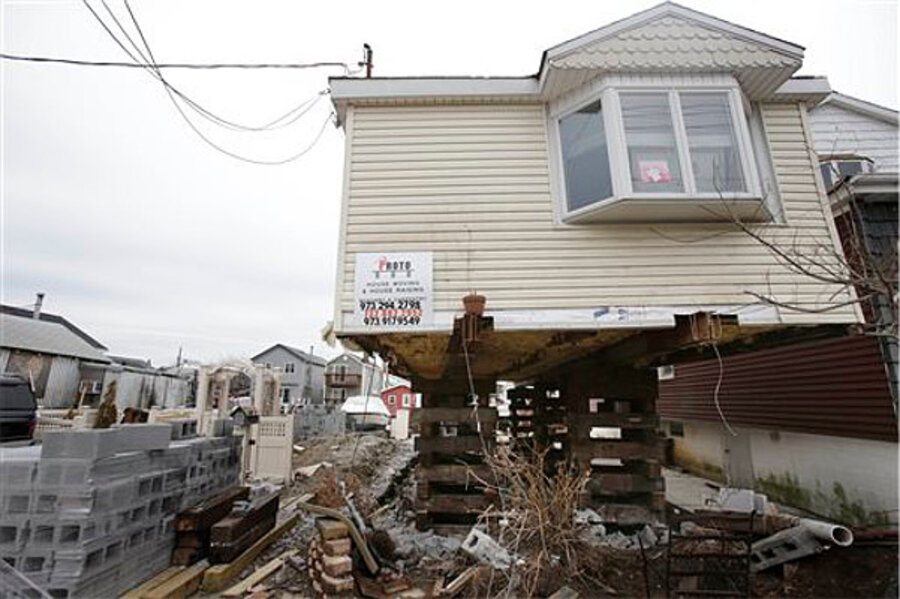Superstorm Sandy, one year later
Loading...
Four charities that raised money for Superstorm Sandy relief efforts have agreed to either accelerate spending or kick in more cash as a result of negotiations with New York state.
Attorney General Eric Schneiderman announced Thursday that the American Red Cross has pledged an additional $6 million to storm victims. That's on top of the $308 million it raised previously for Sandy relief.
Three other charities have agreed to a timetable for spending money still sitting in the bank on the storm's anniversary. They are the New York Annual Conference of the United Methodist Church; Kids in Distressed Situations; and a foundation established by New Orleans Saints quarterback Drew Brees.
Schneiderman has been pressing charities not to sit on large sums of relief aid for extended periods of time.
___
COASTAL DEFENSES
A year after Superstorm Sandy, U.S. Interior Secretary Sally Jewell announced $162 million in funding Thursday for 45 storm-protection projects from North Carolina to New England.
Jewell made the announcement during a visit to the Forsythe National Wildlife Refuge in Galloway, N.J., near where the hurricane's center came ashore Oct. 29, 2012. The natural buffer helped protect some communities from severe flooding.
The government is providing $15 million for salt marsh restoration along the New Jersey coast, including at Forsythe. It also allocated $4 million to help storm-proof the federal government's Ohmsett oil spill research and test facility in Middletown.
Other restoration funding includes $25 million for the Dyke Marsh Wildlife Preserve south of Alexandria, Va., $20 million for a salt marsh ecosystem at Prime Hook National Wildlife Refuge in Delaware, and $11 million for salt marshes at three locations on Long Island in New York.
In Massachusetts, more than $10 million is being provided for the Muddy Creek Wetland, Parkers Tidal and Round Hill Salt Marsh restoration projects.
___
ELLIS ISLAND
Ellis Island will reopen to the public Monday, almost a year after Superstorm Sandy's swells reached 8 feet and badly damaged the iconic former U.S. immigration entry point.
The Oct. 29 storm swamped boilers and electrical systems, and the 27.5-acre island in New York Harbor was without power for months.
The Ellis Island Immigration Museum, housed in the main building on the island, showcases the stories of the millions of immigrants who passed through the island to start their lives in the United States. More than a million documents, photographs and other artifacts at the museum were moved before the storm because it was impossible to maintain the climate-controlled environment needed for their preservation.
The artifacts survived the storm but will remain in their temporary space for the time being. Crews are still working on a revamp so that the next bad storm won't leave the island shuttered for a year, a spokesman said.
Nearby Liberty Island, which also flooded during Sandy, reopened on the Fourth of July.
___
PHOTO EXHIBITION
Two hundred images of Sandy and its aftermath will go on display Tuesday, the anniversary of the storm, at the Museum of the City of New York. "Rising Waters: Photographs of Sandy" was culled from 10,000 submissions from New York City, Long Island and New Jersey.
Some were taken by professionals; others by amateurs; and many by people who suffered personal loss.
The exhibition is arranged thematically: Storm, Destruction, Coping, Home, Relief and Not Over. There are images of anguished faces; houses teetering precariously; church pews filled with salvaged clothing; toll plazas under water; an aerial view of New York City's Breezy Point neighborhood, with row upon row of homes gutted by fire.







